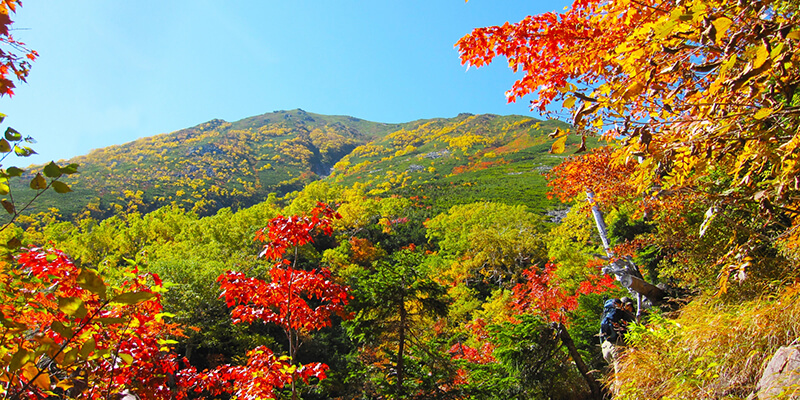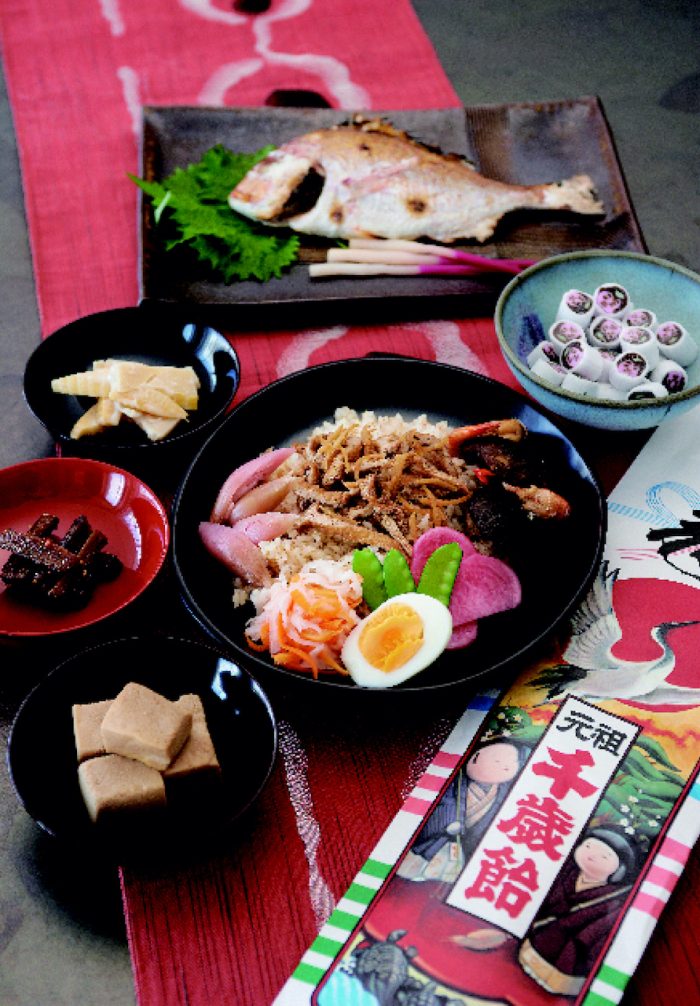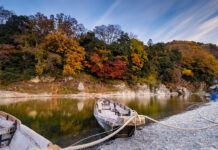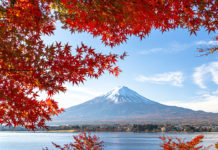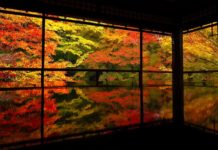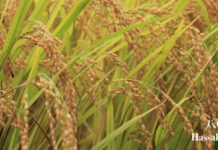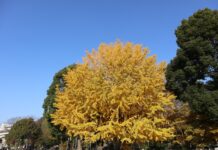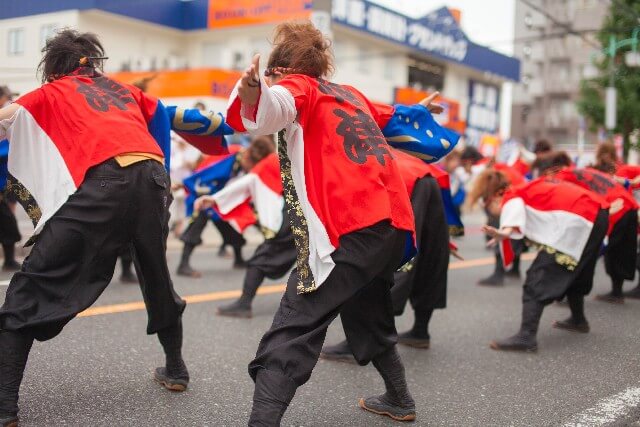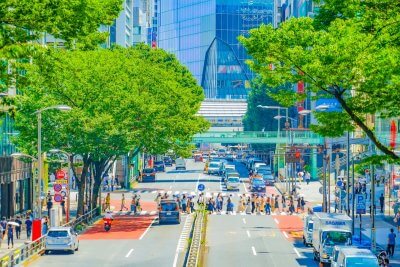Know your Japanese trees before your autumn walk with this handy guide! Japan has many trees native to its soil that you won’t find anywhere else. The peak for the changing of colors is different for every region. So, be sure to check one of our fall foliage guides before planning your autumn trip to Japan to see beautiful Momiji and other autumn leaves!
What Japanese Autumn Leaves Turn Red?
For hikers that are looking for Japan’s trademark autumn red scenery, keep your eyes open for these popular Japanese trees that paint the landscape in autumn with warm crimson hues.
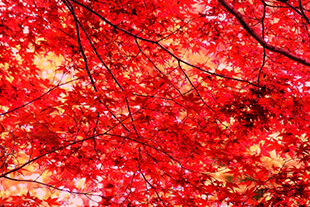
Maple or Momiji
The maple tree or Momiji has inspired Japanese art, gardening and even poetry for hundreds of years. Possibly the most iconic tree for autumn, it can turn beautiful shades of red, yellow and even purple. More than being a tree, it represents peace and serenity. The maple can be so important that a whole garden is centered around it. One of the best places to view these Japanese Momiji is the Fuji Five Lakes area around Lake Kawaguchi.
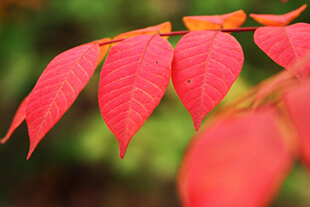
Japanese Sumac Autumn Leaves
Japanese sumac is also known as the Chinese lacquer tree because their sap is used to make lacquerware. The trees can grow up to 20 meters tall. In addition, the fruit of Japanese sumac can be used to make dye. However, be careful around this this tree, as its sap may cause rashes and other allergic reactions.
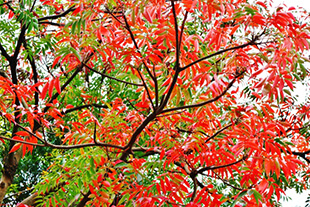
Wax Tree Autumn Leaves
Japanese wax trees are flowering plant species with long leaves. This beautiful tree with red autumn leaves can grow up to 8 meters tall. Japanese wax tree sap is also used to make lacquer. However, its not as toxic as the Japanese sumac.
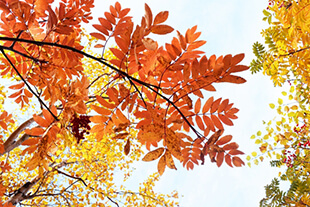
Japanese Rowan Autumn Leaves
Japanese rowan trees are mountain bushes of the flowering plant species native to Japan. They produce small fruits that are perfect for birds but are more of an accessory fruit for humans. In Japanese this tree is called nana-kamado, “seven (times in the) stove” because it never burns up completely and can be reused up to seven times as firewood.
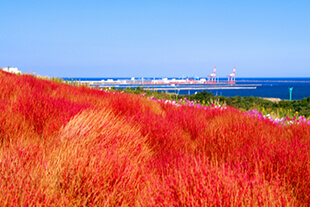
Burning Bush Autumn Leaves
True to its name, the burning bush appears to engulf fields in flame where they are planted. Unlike its name, however, the burning bush plant is more of an herb than a bush. The Hitachi Seaside Park in Ibaraki mass planted the Burning Bush to decorate the hillside. The seeds are used in the Japanese kitchen as food garnish called tonburi. The texture is similar to caviar and it’s a delicacy in Akita prefecture.
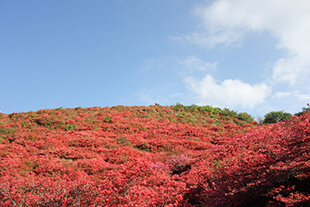
Rhododendron Autumn Leaves
The colors of the Rhododendron continuously change during the year, making it a favorite for the season-loving Japanese. This flower was originally imported from China hundreds of years ago but slowly made its way into the Japanese garden. Depending on the type of plant they can shed their leaves in autumn.
What Japanese Autumn Leaves Turn Yellow?
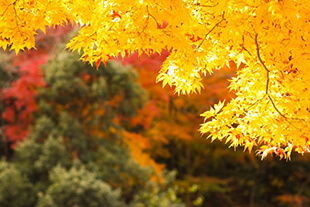
Maple Autumn Leaves
The iconic Japanese Maple not only has the ability to turn red. Japanese maple trees can also appear yellow and purple in autumn. The variety makes the autumn Japanese landscape even more spectacular in fall. So, be sure to try and find each variety!
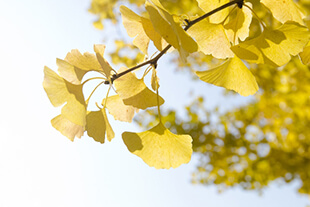
Ginkgo Autumn Leaves
The Ginkgo is considered the second most popular autumn tree right after the Maple. Possibly the earth’s oldest tree as fossils of its leaves, dating back 270 million years, have been found. They turn the brightest yellow out of all the trees. Tokyo has even declared ginkgo trees as a symbol of the city.
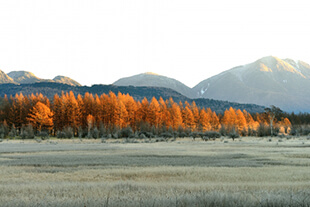
Japanese Larch Autumn Leaves
Second on the list of autumn trees that turn yellow across the Japanese landscape is the Japanese Larch. It can grow at altitudes of up to 2,900m and is the only conifer that changes color and loses its needles. Besides being planted in parks, it is also an excellent tree for bonsai.
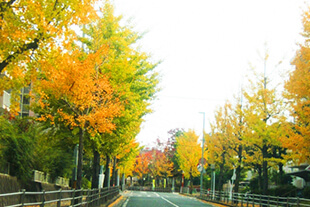
Poplar Autumn Leaves
There are many different types of Poplars but they’re mainly grown as decorative trees. They can grow tall very fast and multiply at an amazing speed. Besides its beautiful yellow leaves during autumn, Poplar wood was a common used material for painting blocks and musical instruments.
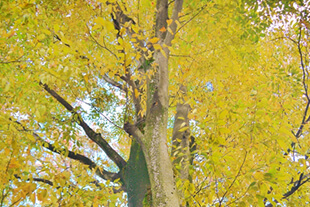
Japanese Elm Autumn Leaves
Japanese elm is commonly planted as a street tree do decorate the roads. There are many variations of the Elm inside Japan but it always has a thick, lush top with a thin trunk. They are green to dark green in spring and start changing colors as early as summer. It is one of the strongest trees against any sickness.
What Japanese Autumn Leaves Turn Dark Orange?
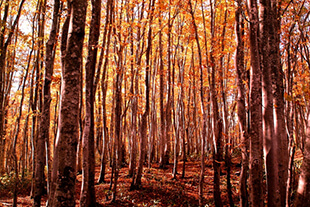
Japanese Beech Autumn Leaves
Native to Japan and one of the country’s most dominant trees in forests, the Japanese Beech can be seen everywhere. It can grow very large, up to 35m in height. The bark is very smooth with a greyish color and the top of the tree grows in a nice, large round bush. Young Japanese Beech leaves and seeds are edible.
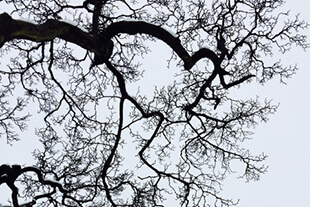
Oak Autumn Leaves
A common tree all over the world, the Oak also makes an appearance in Japan. More than for the aesthetics of the leaves, the Oak was used for its wood. Nonetheless, the shape of the leaves give a beautiful accent to the autumn scenery.
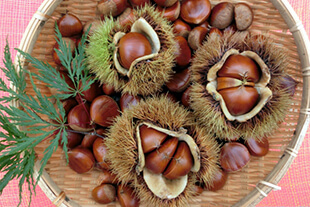
Chestnut Autumn Leaves
Most easily recognizable by the nuts, the Chestnut tree is probably the first tree that pops into your mind when thinking about autumn. A popular activity in Japan, and probably all around the world, is to collect the delicious chestnuts and roast them on an open fire. As a bonus, the warm hues of the autumn leaves hanging above really set the fall scene.
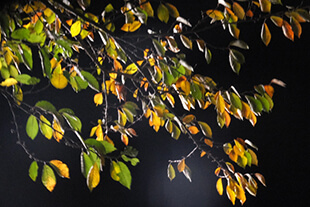
Japanese Zelkova Autumn Leaves
The Zelkova is a species of flowering plant native to Japan, Korea, Eastern China and Taiwan. Mostly used as a decorative plant it is an excellent tree to use for bonsai. To identify a Japanese Zelkova, look for a short main trunk, low branching and an overall vase-shape. This tree is quite sensitive to colder temperatures.
Original article published: February 13, 2018
 0
0

